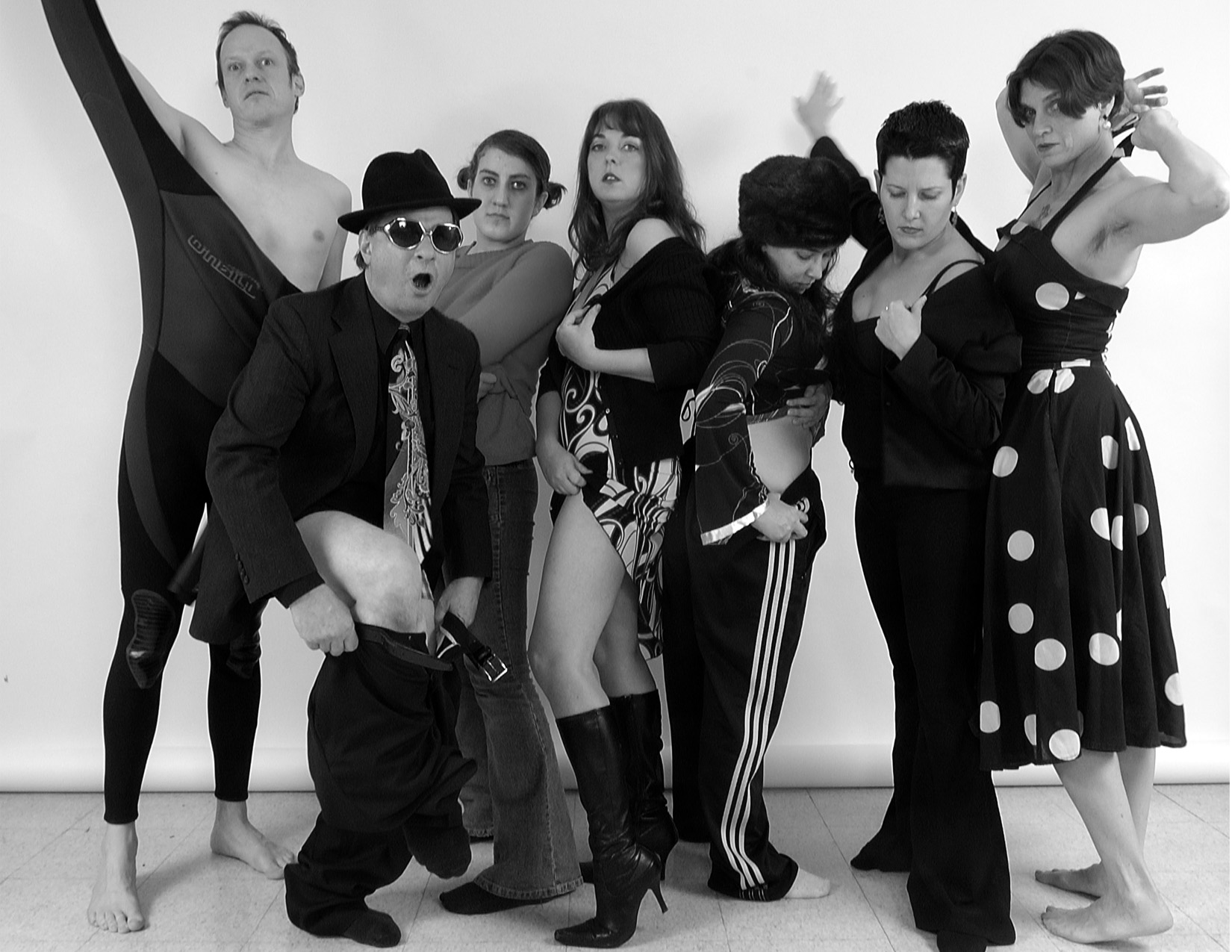To Buff or Not to Buff: Not a Question
Lightsey Darst reviews the second in the Saturday is the New Monday Series--a collection of local choreographers and dancers pushing various envelopes. In the Buff was curated by April Sellers, and was at the Bryant-Lake Bowl Theater.

After watching “In the Buff,” a selection of dance and performance pieces each showing some type of nudity, I can say that flashing flesh is not, in itself, enough to unify an evening. This evening is like a room of assorted nudes (let’s say Ingres, Manet, Picasso, Freud): the common element, flesh, becomes more prominent than how that flesh is revealed, hidden, and used. On the other hand, the evening also resembles an Iron Chef competition, giving the viewer a chance to assess various ways of using the bare body.
Several performances played nakedness for laughs. April Sellers and Judith Howard’s “Fur and Bubbles” messes around with campy poses, conventional and unconventional drapes (fur and bubble plastic), coy covering and wide-eyed revealing; it’s a postmodern, tongue-in-cheek striptease, allowing you to have your boob and giggle about it too. Karen Sherman and Morgan Thorson also cover up—with guitars. They pretend not to notice their own nudity as they sing and play The Jam’s “That’s Entertainment,” Thorson all intent concentration, Sherman wide-eyed and absentminded. In Sherman’s own piece, “Suspicion of Modeling—Naked,” she carries on that innocence, wearing rugby socks, sneakers, and sport gloves and performing in front of a video of people walking by on a sidewalk outside a building. I’m not really naked, she seems to be saying, but if I am, so what?
Rachel Bremmer-Shlay takes a different approach. In the middle of an obsessive, repetitive dance, she unties her halter top, reveals herself, stares at the audience, and then reties the top. She is rebuffing, not teasing, the gaze; her nudity feels like an attack.
The two most successful uses of flesh also play on multiple meanings of nakedness. In an excerpt of Deborah Jinza Thayer’s “Fractal Scapes,” two performers (Dawn Strom and Jamey Garner Leonard) flatten themselves against panes of glass, their eyes blank and wide. Naked women behind glass conjure up a sex show and the idea of women as beautiful animals, but these writhing women subvert conventional sexiness. They walk their breasts slowly up the glass or rub them back and forth, the nipples sometimes disappearing into flesh, sometimes spreading out into dark dots. These slow, sad distortions seem the effect of our gaze, the bodies shifting form as we watch them.
Pam Plagge’s “Dear Mr. Meathead” begins as burlesque: a nude woman, draped in a towel, reveals herself and begins to strut, shaking her fingers as if she were carrying feathered fans. But then she grabs a bottle of ketchup, squirts it onto the tarp beneath her, and begins to writhe in the red syrup. It’s funny that she’s rolling in ketchup, but the ketchup reads to our eyes (even as we can smell its familiar vingary sweetness) as blood. The perverse sexual image of a woman covered in blood (not to mention the implication of meat) is here offered as something amusing. It’s as if Plagge is pulling up a dark corner of the evening. You can laugh at this ironic nudity, she seems to say, but there’s bad history here.
Other pieces were less successful, either because they were excerpts of longer pieces, or because nudity seems to rob some choreographers of their imagination, as if nakedness were an end in itself. The length of the show (stretched out by difficulties with props) and low quality of several pieces made it difficult to feel generous.
If the evening offered a tour of ways to use nudity, it also offered a tour of nudity itself. After an evening of looking at bodies, all bodies begin to look alike—or rather, they all turn out to be so different (unexpected pudge here, striation there) that even Venus DeMars’s anatomy (shown off in an oddly effective, homemade yet glamorous performance piece at the end of the evening) looks entirely normal. Moreover, the fact that this performance found so many performers and so many audience members, and went on without any trouble, proves that nudity’s meaning is changing. If we’re losing the power to shock, though, what are we gaining?